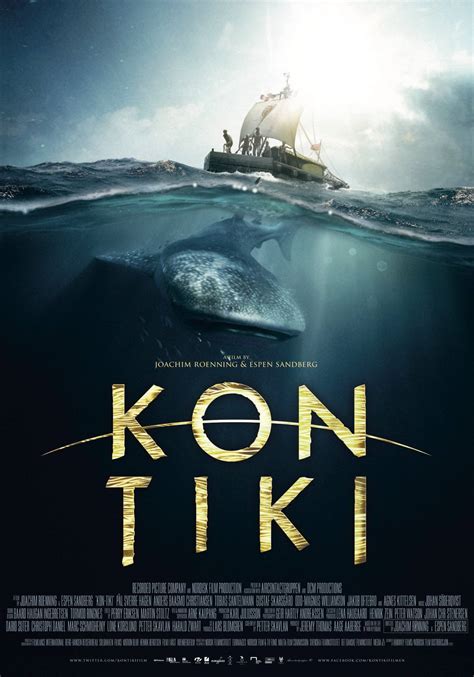Kon-Tiki
directed by: Joachim Ronning, Espen Sandberg, year: 2012
actors: Pal Sverre Hagen, Anders Baasmo Christiansen, Tobias Santelmann
actors: Pal Sverre Hagen, Anders Baasmo Christiansen, Tobias Santelmann

Description:
Kon-Tiki is a 2012 historical drama film about explorer Thor Heyerdahl's epic 4,300-mile crossing of the Pacific Ocean on a balsa wood raft in 1947. The film follows Heyerdahl and his crew as they set out to prove his theory that Polynesia was settled by people from South America. As they battle treacherous seas, sharks, and doubts from the scientific community, their incredible journey becomes a test of endurance and determination.Keywords:
Adventure, Exploration, Survival, Friendship, PerseveranceWhat is the Kon-Tiki theory?
The Kon-Tiki theory, proposed by Norwegian explorer Thor Heyerdahl, suggests that ancient Peruvians could have settled Polynesia by sailing on rafts made of balsa wood. Heyerdahl believed that rather than migrating from Asia, as widely accepted, South Americans could have navigated the Pacific Ocean, driven by currents and winds. He tested this theory in 1947 by crossing the Pacific on a raft named Kon-Tiki, demonstrating that such a journey was possible. The expedition aimed to challenge prevailing views on human migration in the Pacific.
Is Kon-Tiki based on a true story?
Yes, "Kon-Tiki" is based on a true story. It tells the tale of Thor Heyerdahl, a Norwegian explorer who, in 1947, embarked on an adventurous journey across the Pacific Ocean on a raft made of balsa wood, named Kon-Tiki. His goal was to demonstrate that ancient South Americans could have settled Polynesia. Heyerdahl and his crew traveled over 4,300 miles from Peru to the Tuamotu Islands, and his expedition was documented in both a book and an Oscar-winning documentary film.
What does Kon-Tiki mean in English?
"Kon-Tiki" translates to "God of the Sun" in English. The name originates from the Inca mythology, where "Tiki" refers to a deity or ancestor figure, and "Kon" signifies the sun. The term is associated with Thor Heyerdahl's famous 1947 expedition, during which he sailed a balsa wood raft named Kon-Tiki across the Pacific Ocean to demonstrate that ancient South Americans could have reached Polynesia. The journey aimed to explore the possibility of pre-Columbian trans-oceanic contact.
Did Kon-Tiki make it to Polynesia?
Yes, the Kon-Tiki made it to Polynesia. The Kon-Tiki was a raft used by Norwegian explorer Thor Heyerdahl in 1947 to demonstrate his theory that ancient South Americans could have settled the islands of the Pacific. The expedition successfully sailed from Peru to the Marquesas Islands, covering approximately 4,300 miles in 101 days. Heyerdahl and his crew arrived in Polynesia, proving that it was possible for prehistoric peoples to travel across the ocean on simple rafts.
Explore More Categories:
Secrecy Television Privilege Bioluminescence Monsters Documentary Exploration Marriage Innocence Found Footage Masculinity Cosmic Hypnosis Netflix Film Environment Sexual Harassment Catastrophe Minimalist Youth Human Experience Submarine Japanese Cinema Civil Rights War Drama Globalization Social Issue